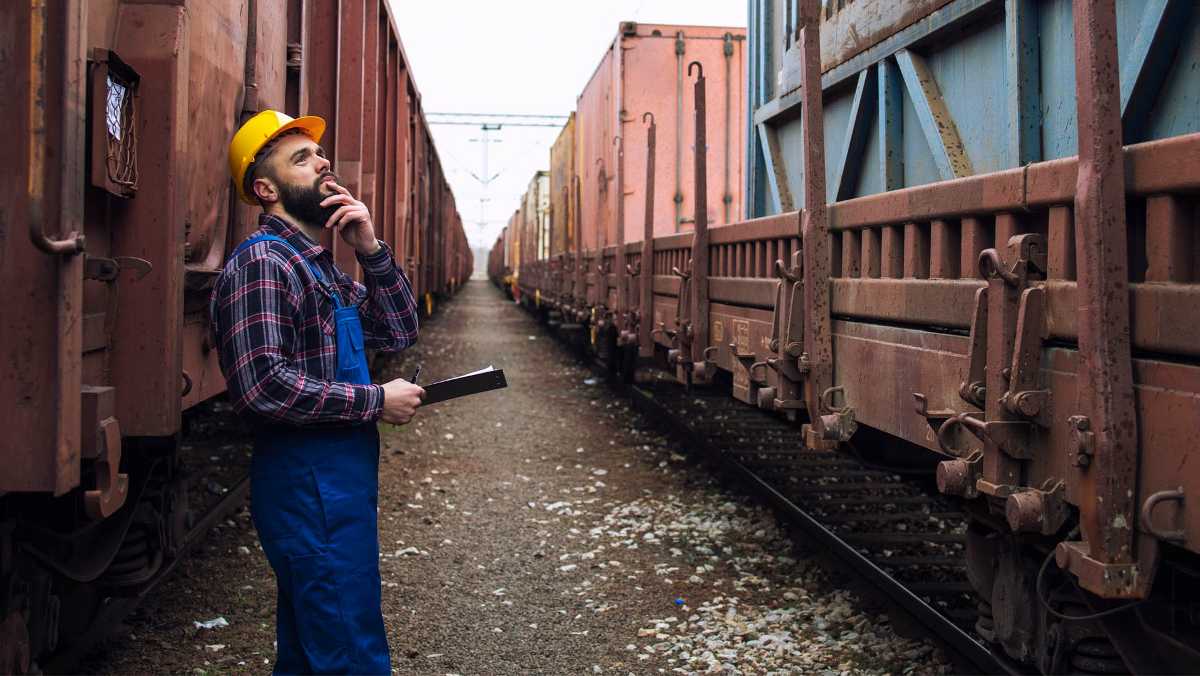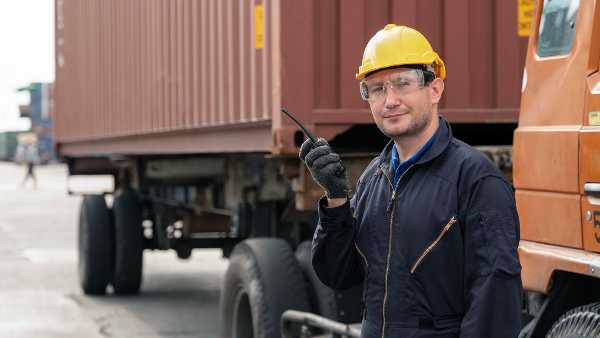New Silk Road – to and from China by train

- Sandra Visser-Meijer
- Background
- Edited 10 July 2024
- 4 min
- Managing and growing
- International
The New Silk Road is a modern rail link that connects Western Europe to China. Learn how this logistics route can be an interesting alternative to air and sea freight between Asia and Europe. Consider also the impact caused by the war in Ukraine and international sanctions against Russia.
The New Silk Road rail route is a vital connection between Asia and mainland Europe. Its most important developments in recent years have been in Asia. For example, Khorgos in Kazakhstan has become the central transhipment gateway. Countries in Central Europe, such as Poland, the Czech Republic, and Hungary, have also become more accessible by rail.
What is the impact of the EU sanctions against Russia?
Russia’s invasion of Ukraine and the EU sanctions against Russia are affecting rail freight transport on the New Silk Road. This is because a key part of the route runs through Belarus and Russia.
The sanctions against Russia are keeping businesses from transporting goods by train. Several freight forwarders no longer transport goods over the northern part of the New Silk Road, through Russia and Belarus. Businesses that do, may still have problems insuring the goods.
An alternative rail option is the southern part of the New Silk Road, via the Caspian Sea. This journey takes longer. The rail connection runs from China to Türkiye via Altynkol (Kazakhstan), Baku (Azerbaijan), and Tbilisi (Georgia). Or you can opt for sea freight.
Always talk to your carrier to discover which logistics routes offer the fastest and cheapest solutions for your current needs.
The information about the New Silk Road that follows covers the period before Russia invaded Ukraine and before new international sanctions were imposed by the EU.
New opportunities
Alongside long-standing logistics routes via air and sea transport, container transport by rail is an extra option for transporting goods to and from China. Dutch businesses have easy access via 4 terminals: Tilburg, Amsterdam, Venlo, and the Port . These offer direct transport from the Netherlands to China and vice versa.
Duisburg is the largest inland port in the world and is the largest European hub in the New Silk Road. Europe's largest trimodal terminal is being built there. This terminal will offer transshipment opportunities by road, inland waterways, and rail. There are also other connections in Germany, at Frankfurt and Hamburg. And a major European terminal is situated in Warsaw, Poland.
Investment plan Brussels
The 'Global Gateway' plan of the European Commission (EC) is intended to be the European answer to the New Silk Road. With favourable loans and guarantees, the EC is attracting mainly private investors to invest some €300 billion in infrastructure projects in developing countries until 2027. The focus of these projects is on green energy, transport, education, and establishing healthcare systems. According to the EC, the EU investments will eventually create new markets for European entrepreneurs.
New Silk Road routes
The Chinese government is investing billions under the name 'Belt and Road Initiative' (BRI), building connecting routes with the West to promote economic growth. The New Silk Road development breathes new life into the original Silk Road trade routes. It offers modern logistics connections over land and sea.
The New Silk Road takes its name from silk, the shiny textile that is said to have kickstarted trade between East and West more than 2,000 years ago. The so-called Silk Routes formed an ancient trade network for many lucrative commodities.
The New Silk Road route reaches most countries in Eurasia and some countries on the east coast of Africa. It covers a distance of 10,000 to 12,000 km over 3 main routes:
- The northern route operates via Russia, connecting to northeastern China (the regions around Shenyang, Suzhou, Dalian, and Beijing).
- The other northern route operates via Belarus, Russia, and Kazakhstan, connecting to Khorgas in China.
- The longer southern route operates via Türkiye, Armenia, Azerbaijan, Turkmenistan, Uzbekistan, Kazakhstan, and central China (the regions around Chengdu, Chongqing, and Zhengzhou).
More choice
Transport by rail is cheaper than air freight and faster than shipping by sea. The most environmentally friendly mode of transport remains sea freight. If you want to do business sustainably and must deliver quickly, transporting goods by rail is the way to go. The CO2 emissions are considerably lower than for air freight.
When choosing transport, in addition to the type of product you want to transport, you should also consider the speed, cost, and CO2 emissions of the train, plane, or ship.
Types of product
The weight of your products and the volume that a pallet takes up influence your choice of transport. Heavy products or bulk goods like coal or ore are easily transported by rail or ship. This is cheaper than air freight. The New Silk Road will mainly take over volume from air freight. Products such as consumer goods (such as clothing, toys, and TVs) and semi-finished products (including car parts) are suitable for this because they are general cargo. By rail, your costs are lower.
During transport by rail, there are large differences in ambient temperature over short periods. In China, for example, it can be very hot. If the train passes through Russia, the temperature can be below freezing. Perishable goods such as foodstuffs are typically transported by air freight, which is often an expensive solution. By using refrigerated containers on trains, you can more easily transport goods that are vulnerable to large temperature fluctuations.
Compare train versus plane
- Transport by rail is 4 to 6 times cheaper than air freight.
- A plane (5 to 8 days) is faster than a train (15 to 18 days).
- Arrival times with air transport are more predictable.
- Rail transport emits almost 20 times less CO2 than air transport (measured with a 12,000 kg freight on the route between China and Northwestern Europe).
Compare train versus ship
- Transport by rail and by ship almost always takes place with containers. Due to the large temperature differences in rail transport, these are often refrigerated containers.
- The train journey is faster, taking 15 to 18 days. A ship takes 35 to 55 days. The shorter transport time enables you to respond more quickly to changing market requirements. An advantage if you supply consumer products.
- A ship offers economies of scale. A modern container ship, for example, has room for more than 20,000 containers. A train carries around 84 containers.
Discuss with your carrier which form of transport best suits your products and requirements regarding speed, price, and sustainability. Check which documents you will need. Prevent delays during transport by ensuring you have your paperwork in order.
Challenges faced by the New Silk Road
The New Silk Road is developing and gaining in popularity, but its challenges include:
- Differences in safety systems and voltages on the tracks in different countries.
- Additional transhipment in Kazakhstan. All containers are transferred from Russian trains to wagons with a Chinese track gauge. The 2 types are not currently compatible.
- Rail capacity in Northwestern Europe is under pressure. This network is busy and priority is often given to passenger trains.
- Customs checks at European borders take a long time. This is especially true at the Poland-Belarus border and borders.
- The trains coming from China are always full. This is not the case from Europe to China.


